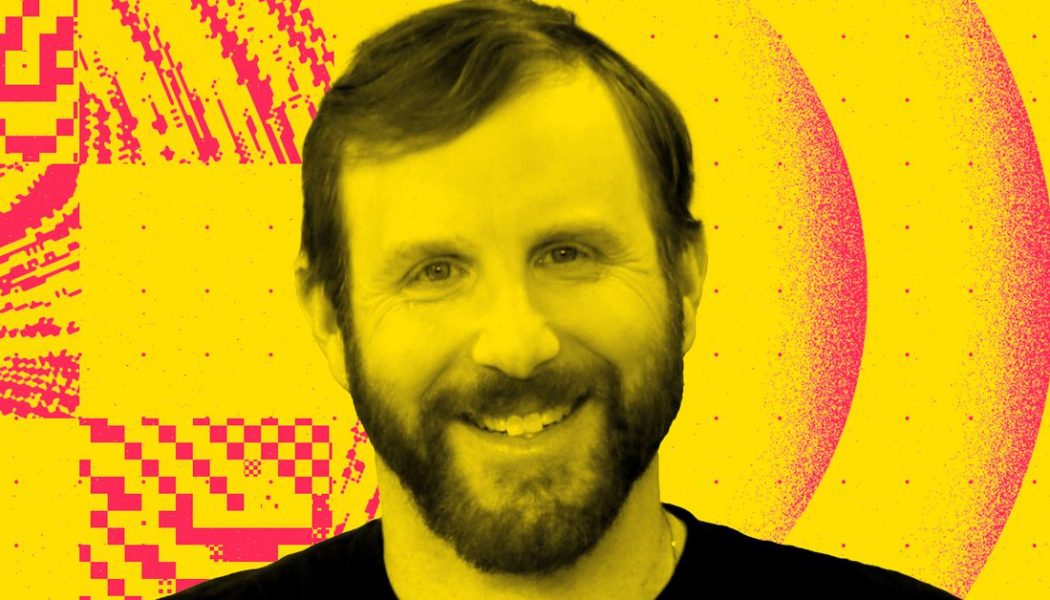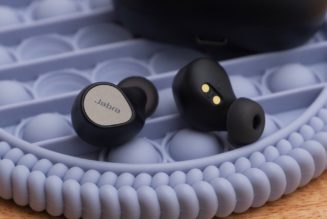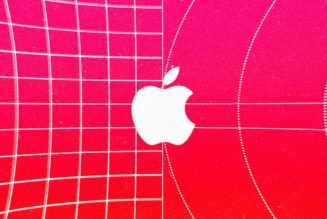
Here’s a big idea that comes with a unique set of problems: replacing meat in the food supply with something that is more sustainable and climate-friendly, yet looks and tastes like the real deal. But that’s what Beyond Meat does — it takes plant protein and turns it into convincing substitutes for chicken, beef, and pork. And on today’s episode, I’m talking with founder and CEO Ethan Brown about how he’s tackling this.
I last interviewed Ethan on the Vergecast, before the company IPO’d in 2019 — it’s been quite a ride since then, as the pandemic sharply impacted the stock, restaurants closed, and the entire food world generally turned upside down. But the company has come out of that with a rising stock price, some big deals to supply quick-service restaurants like Pizza Hut and Dunkin, and a growing business selling to consumers in grocery stores.
I talked to Ethan about how Beyond Meat is structured, how he thinks about growing, and how the pandemic has changed the trajectory of the company. One thing that jumped out to me: Ethan’s really focused on capturing market share quickly — he’s one of the few CEOs I’ve ever talked to who admitted to making decisions based on how fast they would increase market share. It was refreshing, honestly.
We also talk about growing competition in the plant-based meat market — you’ll hear me call Ethan out for taking two subtle shots at Impossible Foods. Specifically, Ethan said Beyond Meat doesn’t use GMO ingredients and says there was some “controversy” around genetically produced heme-iron, which is a key ingredient in Impossible’s product. We went back and double checked with Verge science reporters Justine Calma and Nicole Wetsman, who said that use of heme-iron and other GMOs aren’t big red flags. But you’ll hear Ethan talk about it, and talk about competing with Impossible, so it’s important to have that context in mind.
And, of course, I asked him if he could make a burger that tasted like a brontosaurus.
Here we go.
This transcript has been lightly edited for clarity.
Ethan Brown, you’re the founder and CEO of Beyond Meat, welcome to Decoder.
Oh, it’s great to be here, thank you so much for having us.
You and I have talked before, you’ve been on the Vergecast, but this is a new show, so we have to start at the start. Beyond Meat, as I understand it, is a plant-based meat company, it’s right in the name. You IPO’d last May, you’ve had quite a run since then. I want to talk about all of that, what’s happening next, but start at the start: How did the company start? You’re the founder, what was the process of starting Beyond Meat for you?
Thanks for the opportunity to explain our background. I began thinking about this brand and idea a long time ago. We’ve been in business 12 years now, but even before that,
I was trying to refine it. I had a wonderful opportunity as a kid to grow up in the city and spend a lot of time in the countryside. My father’s a professor and at the time he was teaching at Maryland and did not like being in the city. He grew up in the country himself and really wanted that experience for his kids because that’s where he felt most at home.
So we bought a farm in the western part of the state of Maryland and one up in Maine, and that’s where I spent my time when I wasn’t at school or required to be in the city. I really was exposed early on to the beauty of nature and then as we got into it, my father started a dairy operation there.
We had 100 head of Holstein cattle, and I began to understand agriculture and really enjoyed being there. But I had an issue where, for me as a kid, I had difficulty understanding the key biological differences between the animals we kept in the barn and those that we had in our house as companions. Was it the fact that one was hooved and one had a paw? One had a snout, one had a nose? They obviously had big differences, but which ones were differences that were sufficient enough to merit different treatment?
That stuck with me, and because I didn’t grow up on the farm, I never had that speech to explain it. If you read Charlotte’s Web, there’s a moment in that book where the father explains to the daughter, “This is the way life is.” We’re going to take this pig and slaughter this pig. My dad’s a philosopher and a very deep thinker about ethical issues, and he never said that to me. He just left it for me to figure out because he didn’t have a particular view on it. I grew up and put that aside. Afterwards, I started a career in the energy sector that I loved. I worked for the leading company in the world on proton exchange membrane fuel cells, which is a terrifically elegant technology.
I really wanted to make an impact on climate. And it dawned on me through research and others’ work that livestock was driving a lot of climate problems we were having. So here I returned to this issue that I had as a child. I had the ability to think about making a career change and still be impactful with respect to climate. And once you start thinking about human health and the use of water, land, energy, it became clear to me that if you could figure out a way to separate meat from animals you could make a difference. I started thinking about, “What is meat and how do we build meat differently?” And that was the genesis of the company.
How big is the company now?
We’re about 500 folks. We have our Manhattan Beach project here in Los Angeles, which is our research and development center. We have about 150 scientists and engineers here, and we have production throughout the country.
So 500 and some employees now, 150 scientists in LA, big IPO, hot stock, very common brand name. How’d you go from “I want to re-engineer meat” to this point?
I think it’s about singularity of focus. The way that we think about meat is, instead of focusing on its origin, insisting it has to come from a chicken, cow, or pig, we think about the composition of the animal protein.
What I mean by that is if you actually take a look at what animal protein or meat is, it’s five things: it’s amino acids, it’s lipids, it’s trace minerals, it’s vitamins, and it’s water. None of those things are exclusive to the animal. Life is united by its constituent parts, plants have the same inputs as animals in many cases, just organized differently and expressed differently.
So our job is to find the amino acids, lipids, trace minerals, and vitamins from non-animal sources and organize them in the architecture of muscle or meat. And you know what’s really neat about that is learning the structure of meat is easy. Any land grant university in the country will probably have a pretty good meat science department. You can get a textbook on meat science, you open it up, and there it is. There’s the architecture of meat.
So we took that a step further and started putting meat into some of the most sophisticated biomedical technology out there to understand its structure, the distribution of fat, water, etc. So we stay so focused on delivering not a meat substitute, but meat built directly from plants. And why did we do that? Because if you think about it, what’s the animal doing? They’re consuming a lot of plants and they’re consuming a lot of water. We use inputs from plants and we use water. So we’re simply skipping the animal.
Take a step back and look at the energy sector. We didn’t think anything of spending a billion dollars to develop a proton exchange membrane fuel cell. You go into food and you look at Kraft, how much are they actually spending on what they call a meat substitute? Maybe a couple scientists working on it, at best. It’s very much a cottage project. Whereas we said, let’s bring together the type of research team you’d see at a solar company, fund them, and then get out of their way.
And the second piece of this is, there’s a sense of urgency to what we’re doing. I’ll give you just one example: my son is in the back here at our office today practicing basketball. I don’t know, maybe six weeks ago, there was a day where his high school team could no longer practice in the gym because of COVID, so they had to practice outside. And then they could no longer practice outside because of all the forest fires we’re having here in the LA area, and the quality of the air.
Both of these things, the infectious diseases and the level of fire that we’re having right now, are driven by our impact on the environment. We have to figure out a way to live within the boundaries of the ecosystem that we’ve been given. And in both of those cases, we violated those boundaries, so the world became a challenging place. We have to fix that, and we have a key solution here. So there’s an urgency to what we do that helps us get things done quicker than anybody else.
So you said investment on the scale of an energy company. What were those conversations like as you went out? I mean, I want to replace the animal in the meat production cycle … I think we all understand it now, Beyond Meat exists, Impossible exists, there’s other companies doing it. It’s a market, people will soon be taken with it, you just signed a deal with Pizza Hut. We all get it now, but in the beginning, there had to be quite a bit of skepticism. How’d you overcome that initial skepticism?
The first thing I had to overcome was my own skepticism. I had a pretty decent career going in energy. And the thought of going off into the wilderness and starting a company was intimidating to me, in the sense that it wasn’t what was expected of me. It took me a long time to insist on writing my own script versus listening to what others think I should be doing.
You grow up with these images in your head of what you should be doing, and they’re very hard to shed. So it took me a long time to get the courage to do it. I had young kids at the time, I was making decent money, so it took me a while to say, “Okay, this is something that’s worth a complete change in how you’re spending your time.”
So I got over that, and then it was getting people to think about it. I remember talking to my neighbor, who’s an attorney, and asking “What should we call this product?” I didn’t want to call it meat substitute, I didn’t want to call it a meat alternative. I was playing with the name Plant Protein, which people already used. This was probably in 2009 or so, and he said, “Yeah, but that sounds a lot like something you’d feed your fish.”
So from a marketing perspective, it was really clear to me once we started the company what needed to happen. I had grown up in the era of “Milk does a body good.” and “Got milk?” And what was so clever about those campaigns is they used some of the most beautiful physical specimens in the world to convince parents that children needed milk to flourish. So I actually hired Jeff Manning, the guy who was the first sponsor of that program at the California milk board, and he and I began to work together to craft something called “The Future of Protein.”
Marketing is so much easier when it’s true, and in our case, it’s true. If you consume our products your body’s going to start to feel better. You’re going to have better performance. And you’re also going to be better protected against long-term diseases like heart disease, diabetes, and cancer. So once you have that truth understood, let’s inspire people versus lecture them.
So we started to work with some world-class athletes and asked them to invest in the company. They started to invest and then more and more started to get associated, and it kind of started to steamroll. But the idea I needed to attack head-on was the idea that you needed animal protein to be vital, masculine, and strong. There’s no scientific evidence for that. What’s true is you need a certain set of amino acids, lipids, minerals, and vitamins. But whether they come [from] plants or animals is not the issue. It’s the delivery mechanism. Are you delivering a source that the body’s going to utilize well, and that doesn’t have other things along with it that are bad for you?
If you think about the animal’s muscle, what the animal’s muscle is there for is to do work, right? So it was not designed for consumption. It was designed to get from point A to B, escape predators, catch game, things like that. And so in muscle, there are things that we don’t want to eat a lot of. There are things like cholesterol, things like heme-iron, and things like stimulants for TMAO [trimethylamine N-oxide] in our gut. There’s all these different things you want to try to avoid. [Beyond Meat] can deliver to athletes, and anyone else in the world, all the good parts of animal protein without those negative parts.
So when you see Chris Paul or you see a Kyrie Irving choosing a plant-based diet they’re seeing themselves benefit in a way that gives them a competitive advantage. If I’m a 12-year-old boy or girl, and I see Maya Moore, who’s a tremendous basketball player, choosing plant-based foods or I see Lindsey Vonn, I’m going to get motivated, inspired, and that’s how we market.
There’s a lot of things there that I want to dive on, but I start by asking structural questions. How is your company organized? Do you have a chicken division and a breakfast sausage division? How do you build a company like this?
We think about those types as “platforms.” Coming from where I was in the energy sector, it’s a natural way to think about things. We have a beef platform, we have a pork platform, we have a poultry platform. There are differences, like quick twitch muscle animals have different muscle fibers, and structures than ungulates or larger, slower animals. But at a core asset level, you can use the same understanding of how to source and stitch together amino acids and lipids, and then flavor it to impart the tremendous enjoyment we get from consuming animal meat.
I think some of the most interesting work we’re doing is trying to identify the molecules that are critical for flavoring meat. There’s about 4,000 molecules that make meat taste like meat. And the game here is to understand which molecules are driving the majority of the flavor for the human sensory experience. I have a bloodhound at home and his nose is incredible, right? But for humans we don’t have to get to that level.
So we use mass spectrometers and other tools to understand what’s the key 20 percent driving that experience. Then it becomes a combination game. How do you combine them in the right structure to get that delicious aroma, taste, and mouthfeel? That’s what we work on every day.
Does your pork platform team get competitive with your beef platform team? I’m just thinking like at a regular tech company, the phone team is mad at the laptop team for taking more resources. How do you manage that kind of scaling?
I think we’re a very competitive group, but it’s one team. I think we want to be that group of people that in this generation separates meat from animals.People always ask, “Oh, you have competitors. Are you guys truly competitive or are you all just trying to reform the protein sector?” And the answer is both. If we’re honest, it’s not always kumbaya. We’ve been working at this for 12 years and people invested their careers and lives in this, and we want to win. I don’t think there’s anything wrong with that.
I think I told this story before, but where I went to school, the computer lab had a poster of an apartment building. There was one light turned on in the poster, and in that one lit-up apartment, there was somebody hunched over a computer working. And [the poster] had a simple sentence at the bottom, it said, “Somewhere, someone is working harder on your idea than you are.” And I loved that poster because it’s true. So I ended up putting that quote on a white canvas and hung it up in our lab.
There was some confusion from the research team as to who was working harder than them, but the basic point is true: you have to learn about what competition is for each particular person and how it can drive them.
One question I am asking everybody in the show, and I think it’s particularly interesting for you because you have a lot of decisions to make across a lot of different areas, what is your framework for making decisions as you’ve grown the company?
This sounds like “servant leadership” jargon, but we really try to be a service. That’s ingrained in what we are as a company. How do we serve the consumer to make them healthier, make them better, and help them improve? Also, how do we serve our customers like KFC or Pizza Hut? How do we make them successful? How do we go to battle for them to make sure that they’re bringing more people into their stores than their competition? So first is, how can we serve?
Then, impact. I am probably hopelessly focused on market share. What drives me is how many people are buying our products. I’m more focused on market share than margin. This is a time of change in culture and we want to help people make that change. One of the things that we don’t want to do is ask the question, “Are you willing to pay more for this?” I’d rather just ask the question, “Is this something you want?” And get it to price parity.
So I’m very focused on trying to establish market share to the point where we can sell at price parity. When I think about moves and business, I’m thinking about being a service and how much market share we can get by making this particular decision.
I think the last piece is the voice of the consumer. You can ask the question, what can science do? It’s a pretty simple question. Can it build meat directly with plants? The answer is yes. Over time, we’ll be able to do it perfectly. But I think the second question is, what should science do? Should we genetically modify plant inputs to create products that we want to create? We won’t do it. I refuse to allow it. Here’s why: It’s not that I’m against GMOs, but there’s been too many unintended consequences.
When we think that we can manipulate and control nature, we often learn that we can’t. So if you look at DDT as an example. It’s not a GMO in this case, but it is an example of unintended consequences. [It’s] amazing in terms of stamping out malaria. Not so great in terms of being used as [a] pesticide. There’s been horrible consequences from that. So we have to figure out, once we create something, what are all the downstream unintended consequences? I think everything we need is already in nature. We just have to go find it.
All right. So that’s not so subtle. That’s two shots at Impossible now. So we’re gonna talk about your competition. You mentioned heme-based iron, which is Impossible’s big ingredient. You talked about GMOs, which is Impossible Foods, a genetically modified product. They’re your competitor. You’re saying you’re focused on market share over margin. You’re now a public company. The last time we talked, you were pre-IPO, you were still venture-backed. You could lose money to get market share. You’ve got a different set of people that you’re responsible and accountable to in your stockholders. How are you thinking about that competition with Impossible? Because it is a very different kind of product.
I really genuinely believe this. My first and truly sincere comment is that this is a field that attracts really great and talented people, far more talented than myself. We have them here and Impossible has some too, working on all the right problems in the world. I respect them as a competitor, the NBA would not be a lot of fun if there was one team.
When people said, who are we competing against, were you ever like, “It’s Impossible Foods”?
If they’re going out and spending a ton of money on marketing, it does benefit us, because it’s creating a category with us. So I’m glad they’re here. If they weren’t successful, it’d be trouble for me, so there’s a lot of good things about Impossible Foods, but there’s also a distinction between our two companies and it’s really up to the consumer to decide.
I’ve looked through all of the research on heme iron, and it’s too controversial for me to use. We’ve had suppliers come in here and ask whether or not we’d like to have some sort of supply with them that would get us heme iron. And I just don’t think that it’s necessary.
Also, you look at the literature, and I’m not a doctor, but it’s not clear. Right? So that lack of clarity concerns me. That’s why—
Specifically the literature on heme iron, or on GMOs?
On heme iron. So that just gives me pause. Not saying it’s bad, but that’s their fight. I don’t want to have to deal with that. And so, I listened to the consumer. The consumer would tell me while I was sampling in grocery stores, no GMOs. I heard it again, and again, and again, and again. So I began to say, “Okay, this is something I really need to focus on.” And I’ve stayed true to that.
And the second piece is, if you look at our profile, in terms of saturated fat, it’s really important to me that when I give this burger to my parents it’s good for them. Their assumption is it’s going to be healthier, because it’s a plant-based product. That’s what people think, because they’ve heard for so long that plants are healthier than animal protein.
If I’m then loading that burger with saturated fat, is that fair to the consumer? I don’t think it is. So we have 35 percent less than ground beef. The new [burger] coming out next year will have 55 percent less saturated fat than ground beef. It’s really important to me that we’re conquering two goals at once, health and doing something good for the planet.
And I think if there’s a symmetry between doing something that’s great for your body, and great for the Earth, it’s probably not a coincidence.
One of the things you’re describing here is conceptually really interesting. You’re making a substitute for meat products, that tastes like meat products, but they’re not meat products. And you actually change them nutritionally.
How much of your approach to marketing the product is to just say, eat this instead of a burger, it’s better for you, but it will taste exactly the same, versus it’s a different product that’s better? How much do you have to be in the meat replacement business versus the “here’s a superior choice” business?
One of my favorite analogies for all of this is right here. *Ethan holds up his iPhone* This is an iPhone. Nobody had to denigrate the landline to make this thing successful. People didn’t have to walk around being like, the landline is going to kill you.
It’s just [that] we came up with something better. And so that’s really the way I run this company. I’m trying to create a better piece of meat. We evolved by eating meat. We talked about this before, we wouldn’t be who we are without meat. We wouldn’t be having this conversation [if] one of our ancestors, the Australopithecus africanus, hadn’t decided to become more, rather than less, carnivorous. It gave our stomachs the nutrient-dense food that allowed our stomachs to shrink, and our brains grew as a result, because of all that excess energy. [Meat] gave us the incredible capacity we have.
But that doesn’t mean that we can’t figure out a better way to do it. And that’s really what I’m trying to do, and our company is trying to do. It’s not just about, exchanging like for like. If we’re going to start with a blank canvas, we can populate that canvas with the very best that’s in meat, and keep the bad stuff out. And that’s the promise that I’m making to consumers.
Are you a vegetarian?
I’m vegan, actually.
And you eat Beyond Meat?
I eat a ton of it.
Well, I assume you do. So that’s a really interesting conceptual question as well. It’s called Beyond Meat. You’re a vegan. It’s supposed to make all these products that remind people of meat and have the cultural associations of meat. How do you think about that problem, that every vegan should just start eating what looks and feels like animal protein?
It’s not for everybody. And we’ve had people who have interviewed at the company who said they’re very passionate about vegan issues. And then we asked them the most honest one, just, have you had our products?
I can remember one who was particularly straightforward. She said, “They’re too similar to meat. I don’t like to eat them.” And so, for the Western world, I think it’s going to be very hard to see the solutions that we’re trying to achieve, on climate and health, by convincing people to eat salad.
I think salad’s an incredibly important part of the diet, but are your kids going to be the kids that when everyone’s having a hot dog after the baseball game, they’re having a kale salad? I doubt it.
You’re a vegan, there’s many other foods besides that.
Yes, there are. But I think that the centrality of meat to our culture, at least here in the West, is so powerful that I’d rather attack this through technology than through philosophy.
I think I’d rather just create something that’s indistinguishable. If you think about this, these are the three levers that we have to keep pressing on to grow. Taste — let’s get it to be indistinguishable from animal protein in everything sensory, mouthfeel, etc.
Second, nutrition. Let’s get really clear benefits so the consumer truly understands this is better for them than animal protein.
Third, price. Like any other cost curve, let’s drive that cost down to the point of parity, and then below animal protein. It becomes a very unusual consumer [who] says, “I’m still not going to eat that.”
I think that’s the best way to get the market, and the biggest share of it. So if you think about nomenclature in general, nobody’s calling this [iPhone] a phone substitute, or a fake phone, or a phone alternative. It’s a phone. It doesn’t connect to the wall, so it’s different. The mental space we have to occupy in people’s minds, is that this is just a new form of meat.
One of the big things we heard about during the pandemic, you’ve been talking about market share a lot and how you’re aggressively focused on it. During this pandemic, we have heard from traditional meat providers that their facilities had to be shut down, that they were letting animals go, that people were getting sick in those facilities. Was that an opportunity for you? Were you able to ramp up to meet demand as traditional meat supply went down?
It was tragic watching all that happen, both on the human side and the animal side. Beef prices spiked, and so that was obviously a pricing opportunity for us when we came out with a lower-cost value pack.
I think the bigger thing that happened was that on the nightly news, you’d see footage of meat processing facilities, not particularly graphic, but you got a sense for what they’re like. With the people packed together, the carcasses moving, and blood. It brought home to the American consumer how meat gets to the center of their plate today. That was an opportunity for us. Because we’re very proud of our process. You could come, drive out to Missouri, knock on the door of our facility, and I’d absolutely make sure you had a tour.
And that’s my promise to every consumer. Because we’re proud of how our product is made. It goes through a simple process of heating, cooling, and pressure to basically reset the proteins in the form of muscular protein.
You can’t do that at today’s meat facilities. They won’t let you in. And so, what have we gotten to in our food culture is an opaqueness that I don’t think is right. And so that’s an opportunity for us to draw that distinction around transparency.
What does your factory look like? Is it, there’s a conveyor belt with peas, and a conveyor belt with beets? And outside the others there’s a door marked pork and a door marked chicken? What is the actual factory process like? How big is this factory?
I was literally thinking of The Simpsons episode with Duff Beers. And I’m hoping it’s a little more sophisticated than that.
There’s no Mr. Burns in our facility.
My favorite Mr. Burns quote is that, “Since the dawn of time, man has yearned to block out the sun.”
It seems more and more true by the day, I gotta be honest. So what’s the factory like?
It’s this process of heating, cooling, and pressure. We have a proprietary system that we use. Really a lot of the technology is in something called a die, which is the final stage.
You’re putting in these inputs. So you separate the protein from the fiber. You mill a legume, or a pulse [grain] and their protein and fiber are together. So you split those by putting them in the water and changing the pH level. That affects the separation between the fiber and the protein. That protein’s then dried for us to combine with other ingredients like fats.
So let’s say [a] protein exists — and I’m holding my hands up like a church steeple here for listeners. It looks like this in plants, and we need to break it and then reset it so it stitches together. Now my hands look like two people holding hands. That’s the process we’re doing.
That occurs through the application of heat, cooling, and pressure. Then, from that point forward, a lot of what we do looks like a conventional meat facility. So much so that we send some of our products to people that are operating conventional meat facilities, and they do the forming. So instead of getting ground beef in a thousand-pound tote, they’re getting our matrix of protein and fat. That’s then being formed into burgers, or sausage, or what have you. So after the step of protein formation, it’s pretty similar to how meat is prepared.
Stay on the market share point for a second. You talked a lot about your partners and being in service to them, Pizza Hut, KFC, etc. Is your big market the restaurants? Or is it consumers, grocery stores?
So we were 50/50 when we came into the 2020 year. And then with COVID, we went very dramatically toward retail. It hit 12 percent food service, 88 percent retail, which was difficult.
But we have such passion for the quick serve restaurant (QSR) space. And some of our most important work has occurred there.
If you look at the early launch we did in Canada with A&W, or the Subway work, or Starbucks, a lot of it gives the consumer the Beyond Meat experience where they’re used to eating and in form factors that they’re used to consuming. So getting a breakfast sausage at Dunkin with our sausage in it is indistinguishable or better.
So QSR are really important to us from the perspective of getting the product to people where they want to consume [it], and in fact, I believe so strongly in that idea that we’re enabling people to do the things they like doing, that I trademarked the phrase, “Eat what you love.”
We’re not about telling you not to go have chicken tenders. We’re just giving you a better way of doing it, and so QSRs help us to do that. Retail is also extremely important to control our narrative or our brand. That’s where you directly connect with the consumers. Both are really important moving forward.
In the pandemic, obviously the restaurant industry was hit. You said it was difficult. Did you see orders crash from the restaurant industry immediately? Was it a slow wave or did that meat processing world collapse actually improve things for a minute there?
If I had to give a single word about just how running a business was difficult during this entire period it’s: variability. The consumer behavior turned so quickly. You had the shutdown, which had food service going from 60 miles an hour to five miles an hour, and then you had a massive stock-up in the second quarter as people began to panic and buy all the groceries they could. Then that slowed grocery consumption because people’s freezers were full. Then you had partial relaxation of stay-at-home, while other place’s stay-at-home orders came back on. It’s just been really hard to manage inventory this year. That’s been the biggest issue for us. Like everybody else, man, we are just really looking forward to this vaccine kicking in and getting back to business.
One of the things about your products is— and I think we’ve talked about this before — but a chicken tender, a sausage, a cheeseburger, those are all relatively processed forms of meat, and you’re talking about traditional meat processors taking your protein blend and making that stuff. You can’t make a steak. You can’t make a pork chop. Is that on your road map? Do you think you need to get to that place?
There’s a quote in my office from Mother Jones in January 2015, written by Tom Philpott. It’s motivational.
It says, “Beyond Meat will never be able to introduce pea protein into one end of a machine, extrude a convincing substitute for seared steak or roasted chicken from the other.” He’s wrong, and we’re spending a lot of money to make sure that he’s wrong. As you get into these whole muscle factors, the distribution of fat and protein becomes clearer to the consumer’s eye. You can see the marble fat and you can see where the protein lays, and so it’s not as easy as minced or ground. Steak is a perfect example of that.
But the technology that we have available to us is so extraordinary, so whether it’s 3D printing, or whether it’s these different dies we’re building, we will get to that point. Think about this, a translucent chicken breast with skin, how do you create that? That’s the type of thing we’re looking at and working on, and we’ll get there eventually.
Is that another billion dollar, energy-size bet, or is that a skunkworks research team?
So we have skunkworks going on in other areas that are even further out, and that’s how we tended to employ those types of groups. People don’t understand that word. It’s like groups that work over in a corner and they start to smell because they’re working so hard on the concept. That’s pretty mainstream for us. That’s pretty right down the center for us. It’s really about that innovation curve. It becomes harder as you get closer. Our program here is called the Manhattan Beach Project because we’re next to Manhattan Beach, but more importantly, my initial foray in the energy sector was working a lot around the Department of Energy, and particularly around their weapons sites where they had a lot of uranium.
I learned a tremendous amount during that time. I read all of Richard Rhodes’ books about the Manhattan Project and about World War II, and the notion of bringing together the best scientists and best managers to pursue a really important global issue, which was to beat the Germans. I wanted to create that sense of urgency and scale in our facilities here. Obviously we’re not that big, but that same sense of purpose prevails in that building. It’s just going to get harder as we get closer.
You said you had some things that were farther out. I have to ask, what is farther out than a steak?
The different technologies for getting there.
You don’t have two people who are like, “We got to make a brisket. We’re doing it today.”
No, we’re staying away from that. There’ll be no exotic meats.
Well, so that’s not my question. My producer, Andrew, he wants me to ask every food CEO that we talk to, have you ever thought about just making something completely novel? You’re in the paradigm of breakfast sausage and fried chicken. Those are pretty standard. Have you ever thought, we’re just going to make something that tastes like nothing has ever tasted before? We’re going to make a Brontosaurus.
My mother asked me that same question years ago. She was obviously very supportive, but why not just make something that’s great, center-of-the-plate protein? Why do you have to associate it with beef, pork or poultry?
And I think it’s because it’s part of our culture. They’re central to how we think about food, and so if we’re really going to make a difference versus being an alternative or a substitute, I want to give people what they want. That’s why I’m so focused on these form factors. There’s a time and place for [novelty], but we have to prove that we can do the main stage first.
It seems like you’re a very competitive person. You’ve talked a lot about market share. I’ve asked about your competitors. There are new kinds of competitors, right? The big companies are coming after you. I think you had an investor in Tyson, which is one of the big companies. They sold off their investment. They’re starting their own plant-based division.
When I asked you about Impossible, I feel like every CEO gets a book of how to talk about their competitors. So like, “Them being successful is good for us.” I hear this from CEOs all the time. How big is the total pie? Are we still in the mode of consumer education? We’re growing the market, we don’t know how big it’s going to be, or are you just shaving off points from traditional meat vendors, or is Tyson a real competitor to you?
I think where I would be slightly different from a traditional CEO on this is that because we’re so mission-oriented, I actually do appreciate that Impossible’s doing what they’re doing. If we’re growing a market, someone else spending money to grow that market really does help us. And imagine, if they failed at Burger King, that’d be bad for us, right? So we do have really common interests, but a different approach, and I think it’s up to the consumer to decide. That’s the difference, I’m not going to attack them. They’re a good company, but it’s up to the consumer to decide which choice that they’re going to make. We feel that non-GMOs and staying away from things like heme-iron due to the controversy is the right call.
But we’re both going after the meat share itself. This idea that we’re going to make meat obsolete in 10 years is foolish. [Meat’s] been around for a long time. We’ve got a lot of miles ahead of us in terms of making this product completely indistinguishable, and then it’ll be up to the consumer to decide. But we’re not necessarily focused on stealing market share from them, or them from us. I think it’s really about growing the overall market. The history of meat is fascinating. We were talking about the evolutionary issue before, but also the more recent last hundred years. Look at the growth of the chicken business. Go back a hundred years and look at the share of stomach that chicken had. It really wasn’t significant.
It’s come up and been incredibly successful as a challenger to beef, so there’s going to be changes over time. I think the one mistake people make is to assume that the way life is today is the way it’ll be tomorrow. It’s not the case, the protein industry is changing dramatically and we’re part of that.










